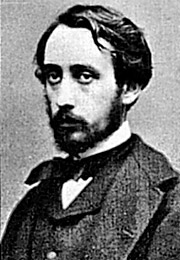


Pastel on buff wove paper
67 x 52.1 cm. (26 3/8 x 20 1/2 in.)
frame: 95 × 78.2 × 6 cm (37 3/8 × 30 13/16 × 2 3/8 in.)
L.1988.62.9
Signed lower left: Degas
Josse (1870–1941) and Gaston (1870–1953) Bernheim-Jeune, Paris, by 1914. Mrs. C. Matthyssen, Paris; [sold as a share to Galerie Durand-Ruel and Galerie Bernheim-Jeune, Paris, 26 March 1921]; [full share sold to Galerie Bernheim-Jeune, Paris, 13 Mar. 1922]. Sold at auction, Hotel Drouot, Paris, Tableaux modernes…provenant de la collection “L’art moderne” [Lucerne], 20 June 1935, no. 7; bought by M. Clerc. [Possibly with Galerie Bernheim-Jeune, Paris]. David-Weill collection, Paris, by 1947. [Galerie Krugier et Cie, Geneva]. Henry Pearlman, by 1966; Henry and Rose Pearlman Foundation, after 1974.
Degas was drawn to the pastel medium because it provides both rich color and spontaneous line in the same stroke and can be worked and re-worked to create complex textures. Here, the viewer’s glimpse of a bather awash in the soft morning light suggests an immediacy that appealed to Degas, who wanted to capture the transitory quality of modern life.
When he displayed this pastel along with others of women bathing and drying themselves at the final Impressionist exhibition, in 1886, its uncompromising realism provoked a tirade of negative criticism, resulting in the popular subtitle “la boulangère” (the baker’s wife), deriding the model’s unfashionably plump figure.

Edgar Degas (1834-1917)
Although he preferred being characterized as a “realist,” Edgar Degas (1834–1917) is nevertheless indelibly associated with Impressionism. Like other members of that circle, Degas sought to capture the experience of contemporary life with fresh eyes, yet his strong emphasis on urban subject matter and linear contours set him apart. Extremely experimental in his techniques in a variety of media (including painting, pastels, print-making, and sculpture), Degas melded lessons from his classical training with a scientific interest in analyzing movement, resulting in a radically new visual syntax. The human figure remained a constant focus for Degas, and he depicted Parisians across the social gamut caught in moments of action, whether at work or at leisure.
Degas was born in Paris to a wealthy banking family. His artistic talents were apparent from an early age, and although he briefly studied law he soon turned toward art as a full-time pursuit. He began by drawing from 15th- and 16th-century Italian masters at the Louvre, and in 1854 he joined the atelier of Louis Lamothe, a painter who had studied with Ingres. After training at the École des Beaux-Arts, Degas spent several years traveling in Italy. These formative experiences solidified his lifelong dedication to the primacy of line and rigorous composition. Degas shifted his focus from classical to contemporary themes in the 1860s. He was particularly drawn to subjects such as horse races and café-concerts, dynamic scenes that he emphasized with unexpected vantage points and eccentric cropping. He was also fascinated by the body language of figures absorbed in their work, including rehearsing ballet dancers, laundresses, and milliners. Degas’s dedication to modern subjects and techniques led him to exhibit with the Impressionists (in seven of their eight shows) between 1874 and 1886, despite his dislike for being categorized as an Impressionist.
In the late 1880s, Degas’s eyesight began declining. His colors grew more intense, line became more independent from form, and his subjects’ poses became more angular and even distorted. This work marked a departure from his earlier emphasis on naturalism, bringing him closer to Symbolist use of color and presaging elements of Expressionism. In his late career, nudes and especially bathers dominated. Depicting women captured in private moments while attending to their toilette, Degas imbued these late works with a particularly tactile quality, while also working on versions in sculpture. Degas’s unorthodox treatment of the female figure has inspired heated critical debate about whether they represent misogynistic or feminist ideas.